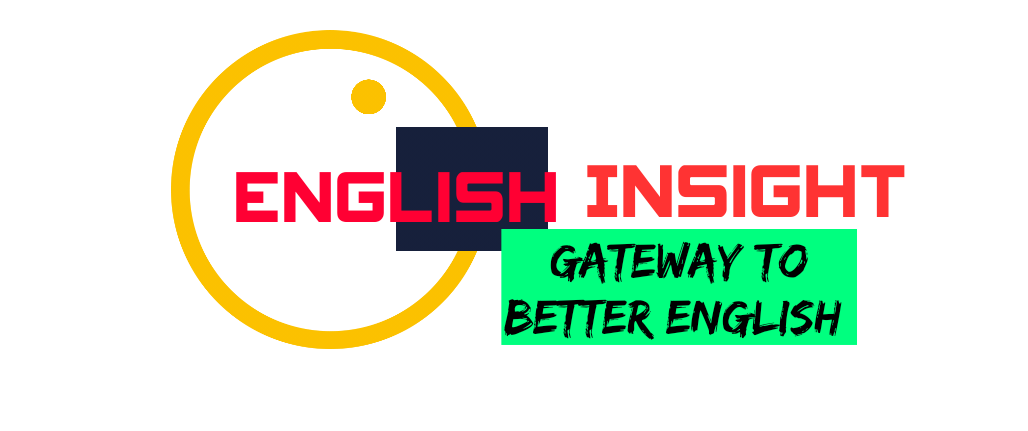Look vs See vs Watch: What’s the Difference?
When learning English, many students struggle with the difference between look, see, and watch. These three verbs all relate to using our eyes, but they are not used in the same way. If you’re confused about when to use look, see, or watch, don’t worry — you’re not alone. In this article, we’ll explain the differences in meaning, usage, and examples to help you use them correctly in everyday English conversations.
✅ Quick Summary
| Verb | Meaning | Intentional or Not | Action or State | Common Uses |
|---|---|---|---|---|
| See | Notice or become aware of something with your eyes | Not intentional | State | “I see a bird.” |
| Look | Direct your eyes at something | Intentional | Action | “Look at the sky.” |
| Watch | Look at something for a period of time (often moving) | Intentional | Action | “I watch TV.” |
🔍 What Does “See” Mean?
“See” is used when your eyes automatically notice something. You don’t have to try. It happens naturally.
📘 Examples:
-
I see birds flying outside the window.
-
Did you see my brother at the market?
-
I can’t see anything without my glasses.
🧠 Remember:
You use see when something enters your eyes without effort.
📍 Bangladeshi Context Example:
-
I was walking through New Market and I saw a famous actor. (You didn’t try; it just happened.)
👁️ What Does “Look” Mean?
“Look” means to direct your eyes toward something on purpose. You choose to look.
📘 Examples:
-
Look at the board, please.
-
She looked out the window.
-
Look at this beautiful saree!
🧠 Remember:
Use look when you focus your eyes on something deliberately.
📍 Bangladeshi Context Example:
-
The teacher said, “Look at the diagram on page 20.”
📺 What Does “Watch” Mean?
“Watch” means to look at something carefully for a period of time, especially something moving or changing.
📘 Examples:
-
I watch the news every night.
-
He watched the cricket match with excitement.
-
They were watching a movie at Star Cineplex.
🧠 Remember:
Use watch when you are paying attention to something that moves or changes.
📍 Bangladeshi Context Example:
-
We watched the live concert on TV from Dhaka.
🔄 Look vs See vs Watch: Key Differences
| Feature | Look | See | Watch |
|---|---|---|---|
| Intentional? | Yes | No | Yes |
| Time Duration | Short | Instant | Long |
| Movement Needed? | No | No | Usually yes |
| Example Sentence | Look at this photo. | I see your car outside. | Watch the football match. |
❗ Common Mistakes to Avoid
-
❌ I am seeing a movie.
✅ I am watching a movie. -
❌ See at the picture.
✅ Look at the picture. -
❌ I was looking TV last night.
✅ I was watching TV last night.
📚 Grammar Tip: Verb Forms
| Verb | Base | Past | Past Participle | -ing Form |
|---|---|---|---|---|
| Look | look | looked | looked | looking |
| See | see | saw | seen | seeing |
| Watch | watch | watched | watched | watching |
🗣️ Real-Life Conversation (Bangladeshi Context)
Mother: What are you doing?
Son: I’m watching a YouTube video on how to cook biryani.
Mother: Hmm, okay. But first, look at your uniform. It’s dirty!
Son: Oh, I didn’t see the stain. I’ll change it now.
🧩 Practice Time
Fill in the blanks with see, look, or watch (correct form):
-
Can you ______ at this photo? It’s from our last picnic.
-
I ______ a rainbow on my way to school.
-
We ______ a movie at the cinema last night.
-
She didn’t ______ me at the party.
-
Don’t just ______ TV all day. Go outside and play!
👉 Answers: 1) look, 2) saw, 3) watched, 4) see, 5) watch
📝 Conclusion
Understanding the difference between look, see, and watch is important for using English naturally and correctly. Remember:
-
Use see when your eyes automatically notice something.
-
Use look when you direct your eyes at something on purpose.
-
Use watch when you pay attention to something moving or changing over time.
By practicing these verbs in real situations — like watching cricket matches, looking at road signs, or seeing friends in the bazaar — you’ll build more confidence in your English speaking skills.
You may read: The Phrase ‘More Better’ is correct?

